Abstract
An association of the histidine auxotroph of Salmonella typhimurium (strain TA1538) within the gastrointestinal tract of otherwise germfree Sprague-Dawley rats is maintained during periods of observation lasting as long as 7 months. The bacteria are found at levels exceeding 10(7) per g in the forestomach and at levels greater than 10(8) per g in the lower bowel and in the feces. Only approximately 10(4) bacteria per g are found in the posterior stomach and in the upper small intestine. The association of the salmonella mutants is maintained when the bacterial association is increased by the addition of other bacteria characteristic of the gastrointestinal flora. Carcinogenic amines, which cause strain TA1538 to revert to histidine independence in Ames' in vitro assays, increase the number of revertants in the feces when fed to the salmonella-associated rats. In contrast, the number of revertants in the feces does not increase when the rats are fed structurally related compounds which are not mutagenic to the bacteria in vitro and for which no evidence of carcinogenicity exists. Sacrifice of rats after feeding the carcinogen 2-nitrofluorene indicates that the number of revertants is increased in the cecum and colon as well as in the feces. The apparent proximity of the bacterial mutagenic response to the location of the tumor response in the colon suggests that the rat associated with the histidine auxotroph may provide a useful model for further investigation of the possible association between bacterial mutagenesis and carcinogenesis within the gastrointestinal tract. In addition, with this model it may be possible to evaluate selectively the effects of various constituents of the flora on the activation of compounds provoking the revertant response.
Full text
PDF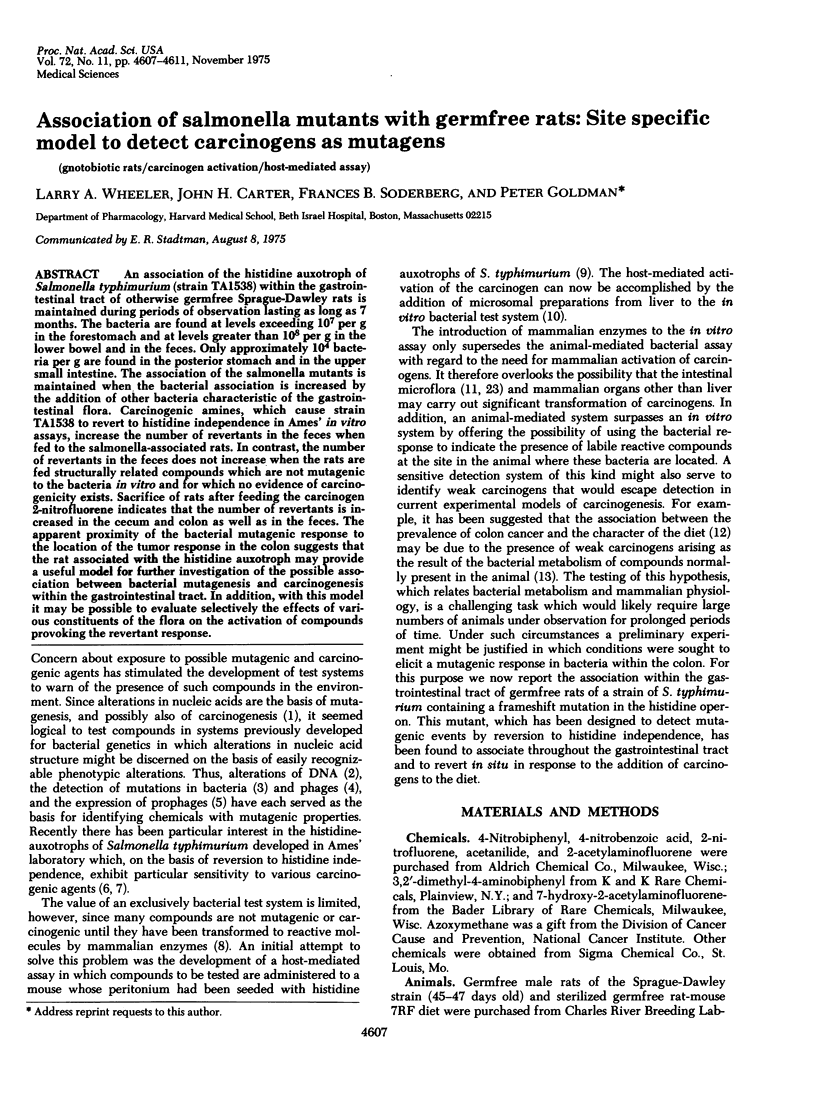
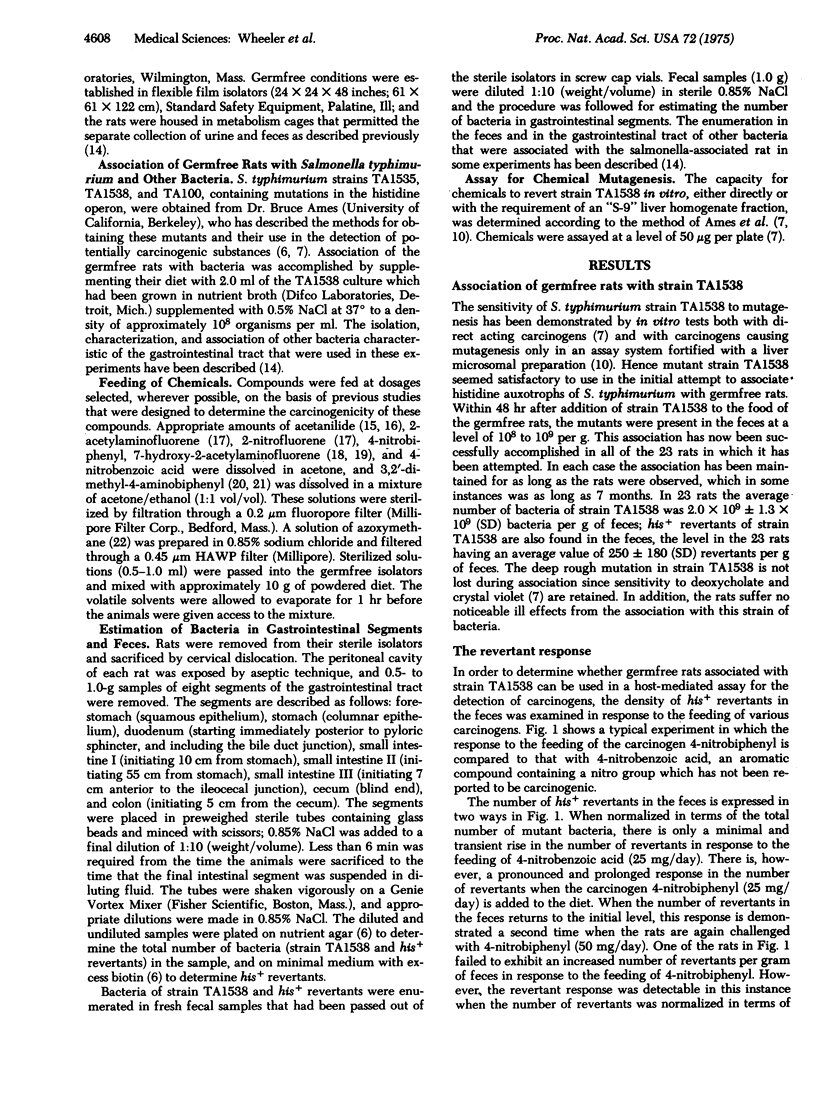
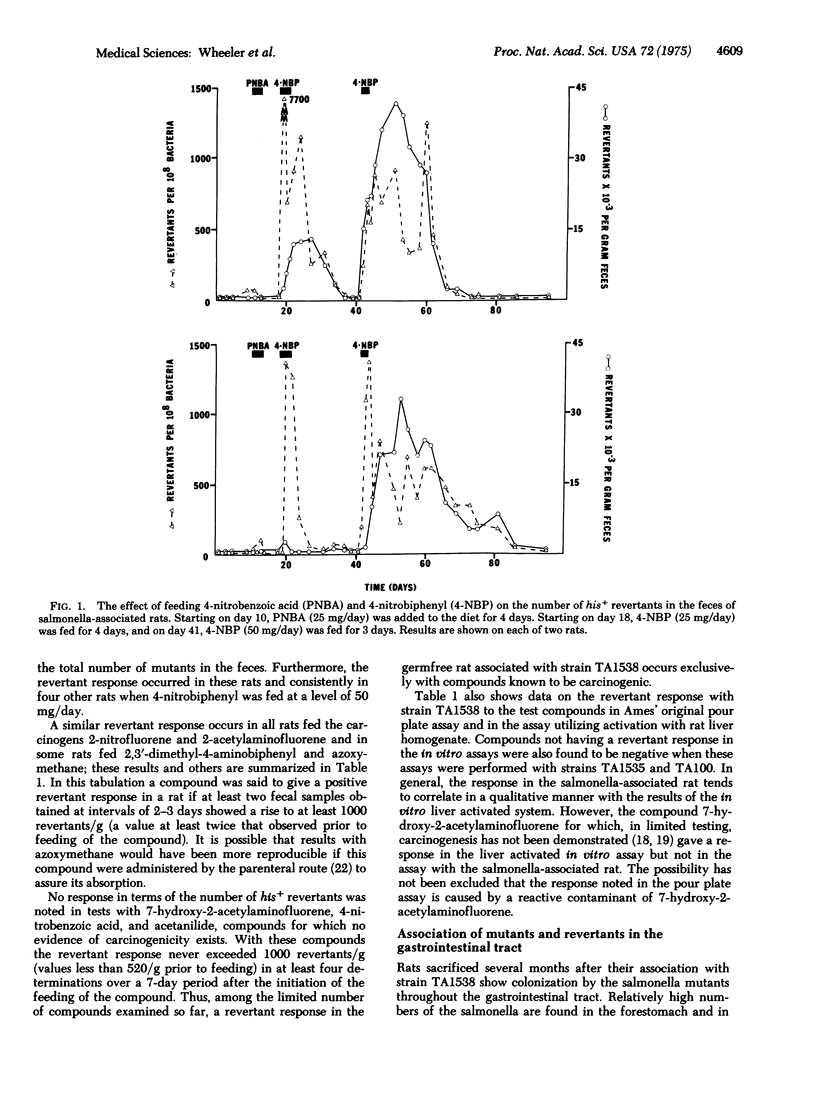
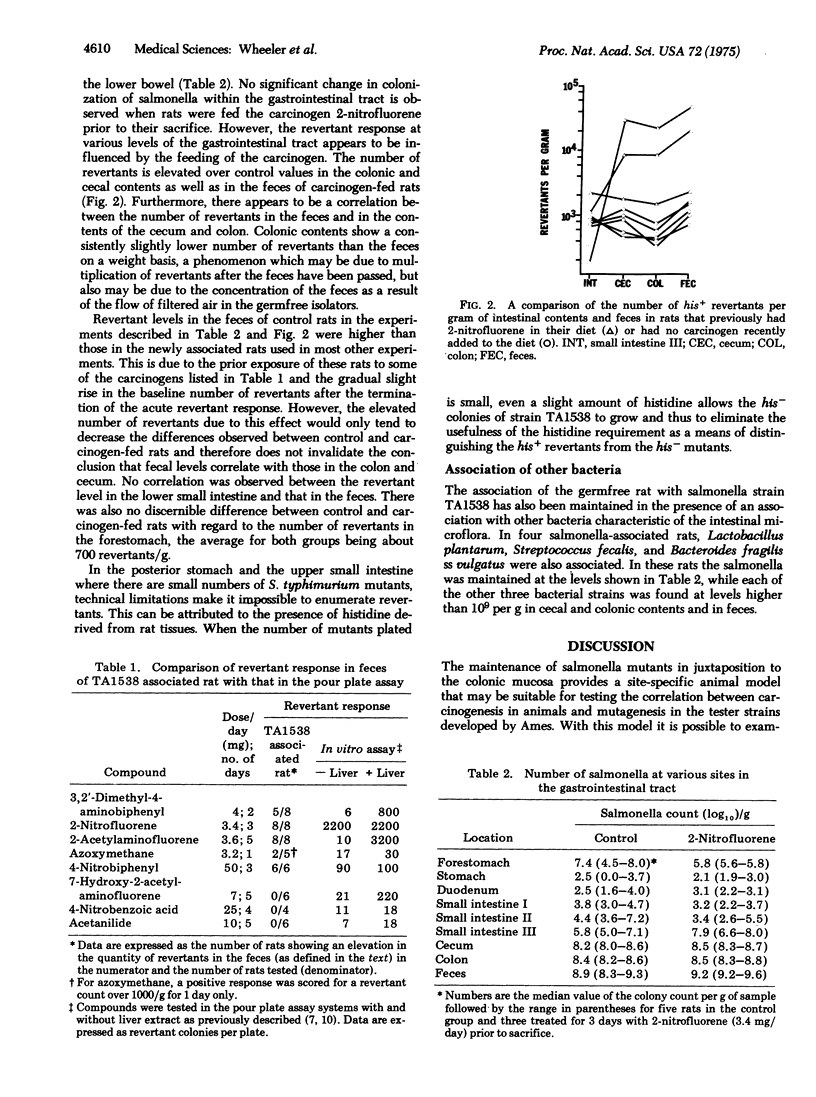
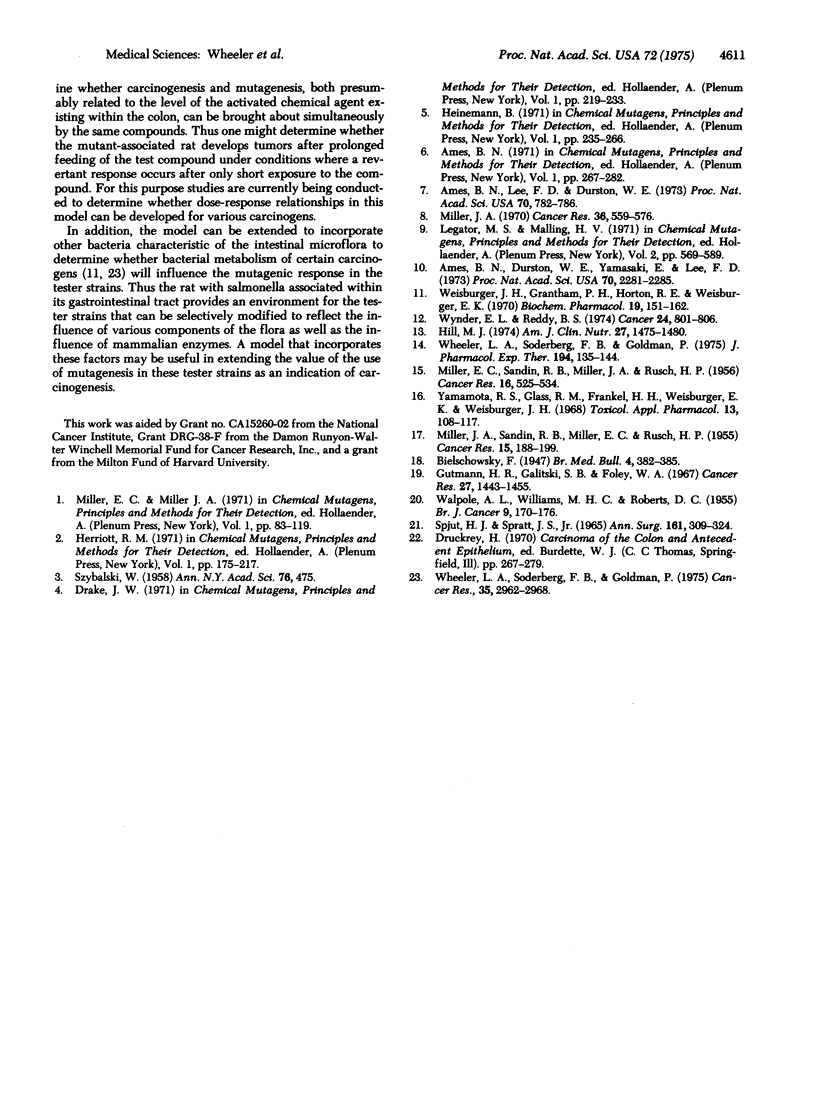
Selected References
These references are in PubMed. This may not be the complete list of references from this article.
- Ames B. N., Durston W. E., Yamasaki E., Lee F. D. Carcinogens are mutagens: a simple test system combining liver homogenates for activation and bacteria for detection. Proc Natl Acad Sci U S A. 1973 Aug;70(8):2281–2285. doi: 10.1073/pnas.70.8.2281. [DOI] [PMC free article] [PubMed] [Google Scholar]
- Ames B. N., Lee F. D., Durston W. E. An improved bacterial test system for the detection and classification of mutagens and carcinogens. Proc Natl Acad Sci U S A. 1973 Mar;70(3):782–786. doi: 10.1073/pnas.70.3.782. [DOI] [PMC free article] [PubMed] [Google Scholar]
- Gutmann H. R., Galitski S. B., Foley W. A. The conversion of noncarcinogenic aromatic amides to carcinogenic arylhydroxamic acids by synthetic N-hydroxylation. Cancer Res. 1967 Aug;27(8):1443–1455. [PubMed] [Google Scholar]
- Hill M. J. Steroid nuclear dehydrogenation and colon cancer. Am J Clin Nutr. 1974 Dec;27(12):1475–1480. doi: 10.1093/ajcn/27.12.1475. [DOI] [PubMed] [Google Scholar]
- MILLER E. C., SANDIN R. B., MILLER J. A., RUSCH H. P. The carcinogenicity of compounds related to 2-acetylaminofluorene. III. Aminobiphenyl and benzidine derivatives. Cancer Res. 1956 Jul;16(6):525–534. [PubMed] [Google Scholar]
- MILLER J. A., SANDIN R. B., MILLER E. C., RUSCH H. P. The carcinogenicity of compounds related to 2-acetylaminofluorene. II. Variations in the bridges and the 2-substituent. Cancer Res. 1955 Mar;15(3):188–199. [PubMed] [Google Scholar]
- Miller J. A. Carcinogenesis by chemicals: an overview--G. H. A. Clowes memorial lecture. Cancer Res. 1970 Mar;30(3):559–576. [PubMed] [Google Scholar]
- SPJUT H. J., SPRATT J. S., Jr ENDEMIC AND MORPHOLOGIC SIMILARITIES EXISTING BETWEEN SPONTANEOUS COLONIC NEOPLASMS IN MAN AND 3:2'-DIMETHYL-4-AMINOBIPHENYL INDUCED COLONIC NEOPLASMS IN RATS. Ann Surg. 1965 Feb;161:309–324. doi: 10.1097/00000658-196502000-00020. [DOI] [PMC free article] [PubMed] [Google Scholar]
- SZYBALSKI W. Special microbiological systems. II. Observations on chemical mutagenesis in microorganisms. Ann N Y Acad Sci. 1958 Dec 5;76(3):475–489. doi: 10.1111/j.1749-6632.1958.tb57106.x. [DOI] [PubMed] [Google Scholar]
- WALPOLE A. L., WILLIAMS M. H., ROBERTS D. C. Bladder tumours induced in rats of two strains with 3:2'dimethyl-3-aminodiphenyl. Br J Cancer. 1955 Mar;9(1):170–176. doi: 10.1038/bjc.1955.13. [DOI] [PMC free article] [PubMed] [Google Scholar]
- Weisburger J. H., Grantham P. H., Horton R. E., Weisburger E. K. Metabolism of the carcinogen N-hydroxy-N-2-fluorenylacetamide in germ-free rats. Biochem Pharmacol. 1970 Jan;19(1):151–162. doi: 10.1016/0006-2952(70)90336-9. [DOI] [PubMed] [Google Scholar]
- Wheeler L. A., Soderberg F. B., Goldman P. The reduction of N-hydroxy-4-acetylaminobiphenyl by the intestinal microflora of the rat. Cancer Res. 1975 Nov;35(11 Pt 1):2962–2968. [PubMed] [Google Scholar]
- Wheeler L. A., Soderberg F. B., Goldman P. The relationship between nitro group reduction and the intestinal microflora. J Pharmacol Exp Ther. 1975 Jul;194(1):135–144. [PubMed] [Google Scholar]
- Wynder E. L., Reddy B. S. Metabolic epidemiology of colorectal cancer. Cancer. 1974 Sep;34(3):suppl–suppl:806. doi: 10.1002/1097-0142(197409)34:3+<801::aid-cncr2820340703>3.0.co;2-p. [DOI] [PubMed] [Google Scholar]


